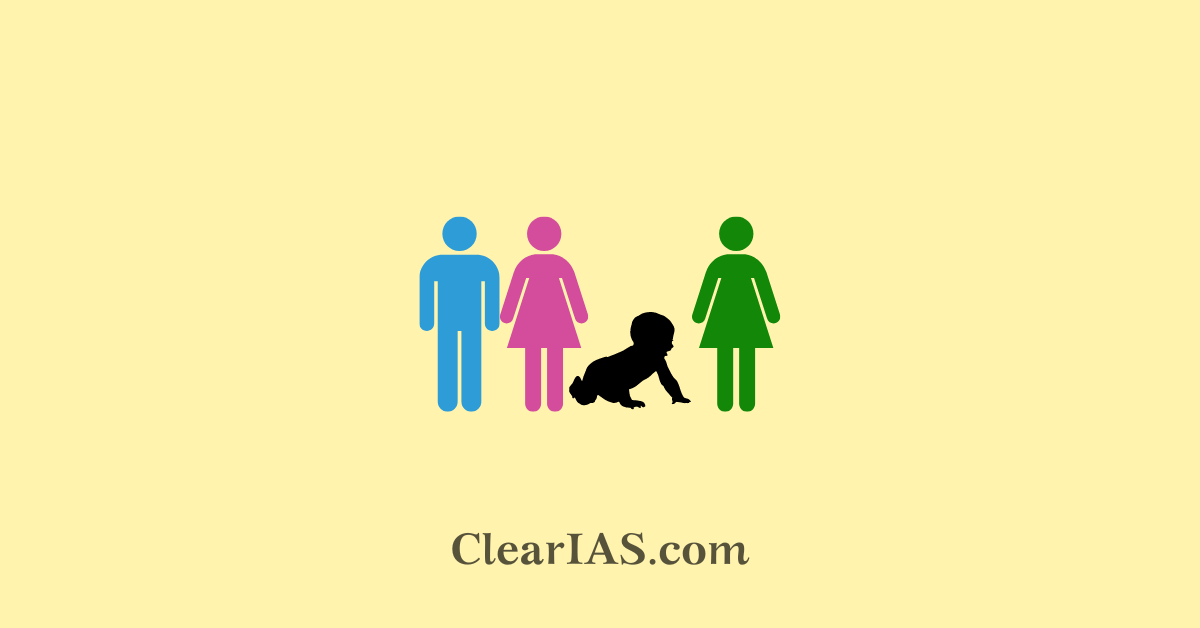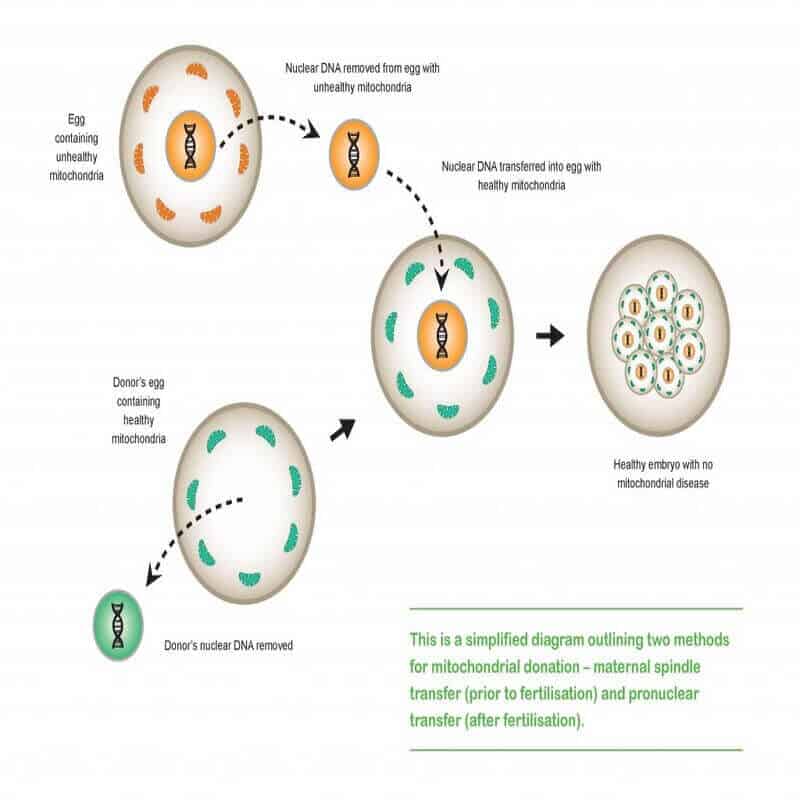
Mitochondrial Donation Treatment (MDT) has been successfully used for the birth of a baby in the UK for the first time. Its also known as a three-parent baby, as the baby has three parents in terms of genetic material. Pioneering technology was used to facilitate this, to prevent the child from inheriting the mother’s mitochondrial disease. Read here to learn more about MDT.
Mitochondrial Donation Treatment offers families with severe inherited mitochondrial illnesses do not pass on the gene to their children.
It is a form of IVF that replaces faulty mitochondrial DNA in the patient’s eggs with healthy mitochondrial DNA from a donor egg.
Most of the baby’s DNA comes from its parents, and just a little percentage comes from the donor, whose mitochondria were used to fertilize the egg.
Although the phrase “three-parent babies” is widely used in the media, most of the baby’s DNA comes from its two parents, with around 0.1% from the donor.
Mitochondrial Donation Treatment

With the use of assisted reproductive technologies, some women may be able to prevent passing on mitochondrial illness to their biological offspring. It is also known as mitochondrial replacement therapy (MRT).
The phrase describes a variety of methods used to guarantee that only healthy mitochondria are transferred to an embryo.
Two techniques for mitochondrial donation have been developed and widely used:
- Maternal spindle transfer (MST)
- Pronuclear transfer (PNT)
In both techniques, eggs or embryos are created using nuclear genetic material and healthy donated mitochondria.
- In MST, the nuclear genetic material is removed from the eggs and transferred into donated eggs that have had their nuclear genetic material removed. The eggs are then fertilized with sperm to create embryos.
- In PNT, the eggs are fertilized with sperm in a lab to create embryos. The nuclear genetic material within each embryo is then transferred into embryos created using donated eggs and sperm from the sperm provider. Again, the nuclear genetic material will have been removed from the donated eggs.
In both MST and PNT, the resulting embryos would contain the biological parents’ genetic material and only the mitochondrial DNA of the donor. Both techniques work equally well.
What are mitochondria?
Mitochondria are double-membraned cell organelles present in nucleated mammalian cells in large numbers.
- They are the powerhouse of the cells as they produce the energy currency called adenosine triphosphate (ATP) through oxidative phosphorylation.
- Every cell has 100-1000 mitochondria, and this variation in copy number depends on the energy requirement of the type of organ.
The mitochondria have their genetic material, and its number is 2-10 copies of DNA per mitochondria.
- Mitochondrial DNA tends to undergo high mutation rates.
- All the mitochondrial DNA is strictly inherited from the mother, hence its maternal inheritance.
Mutations in mitochondrial DNA can result in serious disorders which are quite severe and life-threatening.
Some common mitochondrial diseases are-
- mitochondrial myopathy
- encephalomyopathy, lactic acidosis, stroke-like symptoms (MELAS)
- myoclonic epilepsy with ragged red fibers (MERRF)
- myoneurogenic gastrointestinal encephalopathy (MNGIE)
- neuropathy, ataxia, retinitis pigmentosa, and ptosis
- Leigh syndrome
- Leber’s hereditary optic neuropathy
- diabetes mellitus
- deafness
Mitochondrial disease affects around one in 6000 babies. It is not a single disorder but an umbrella term for dozens of disorders in which the mitochondria are not able to produce energy for cells to work properly. These conditions vary in severity, are often life-limiting, and currently have no cure.
Advantages and Concerns of Mitochondrial Donation Treatment
The major advantage is obvious as MDT will give families affected by serious mitochondrial disease a chance of having healthy children free of a devastating and often life-limiting disease.
- Many children who are born with such genetic disorders would not have to undergo the painful ordeal of growing up or dying because of them at an early age.
- These procedures can reduce infant mortality.
As beneficial as this technique may be, it comes with a fair share of concerns as well.
- The technique itself does not guarantee the complete removal of faulty mitochondria as the complete extraction of the nucleus without some mitochondria remaining attached to it is tricky even for experts.
- The ethical, legal, and social issues that are raised concerning these reproductive techniques are debatable and are mainly the reason why these techniques have not been legalized globally.
- The safety of the technique is debatable and the concern of the development of ‘designer babies’ has been the most raised issue.
- Social issues also arise due to the Tri paternal aspect, as children formed from these techniques might be subjected to mental agony due to discrimination or it may cause legal complications.
- The cost of the procedure is high and can be afforded by a certain section of society.
Conclusion
Even though research in mitochondrial donation treatment is still in its infancy, mitochondrial donation is a blessing for the vast majority of people who suffer from mitochondrial disorders for whom there is no known solution.
This is a great solution since it may also prevent these illnesses from affecting future generations.
As far as the moral questions surrounding the “Three-Parent Baby” are concerned, the baby’s physical appearance is solely determined by its total metabolic fitness, not by its mitochondrial DNA.
However, further study is still required and subject to evaluation to fully understand the long-term impacts of this procedure.
Furthermore, these methods undoubtedly help families whose future children, who will suffer significantly and may not survive through early childhood owing to mitochondrial illnesses, have a limited chance of living a quality life.
-Article written by Swathi Satish






Leave a Reply